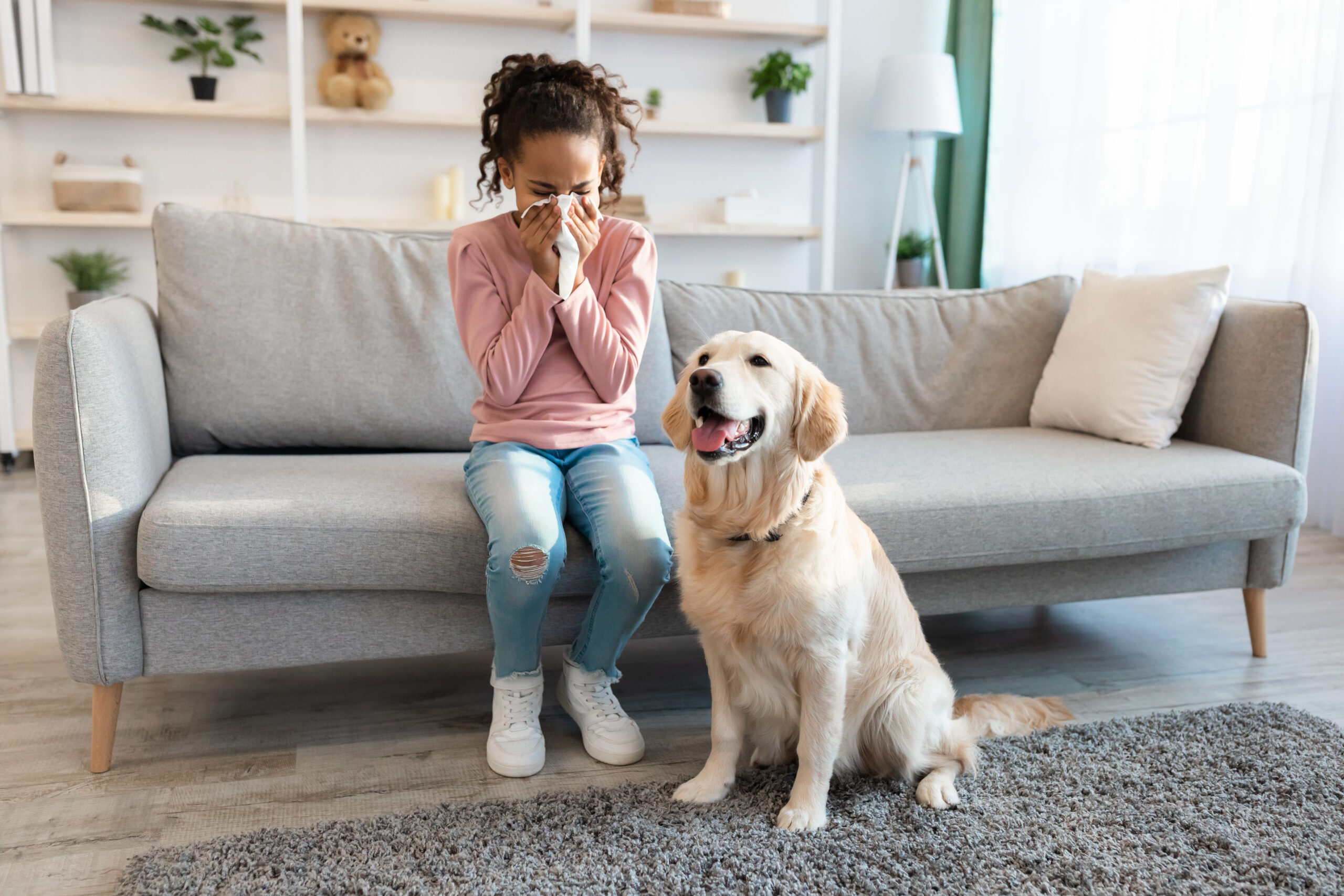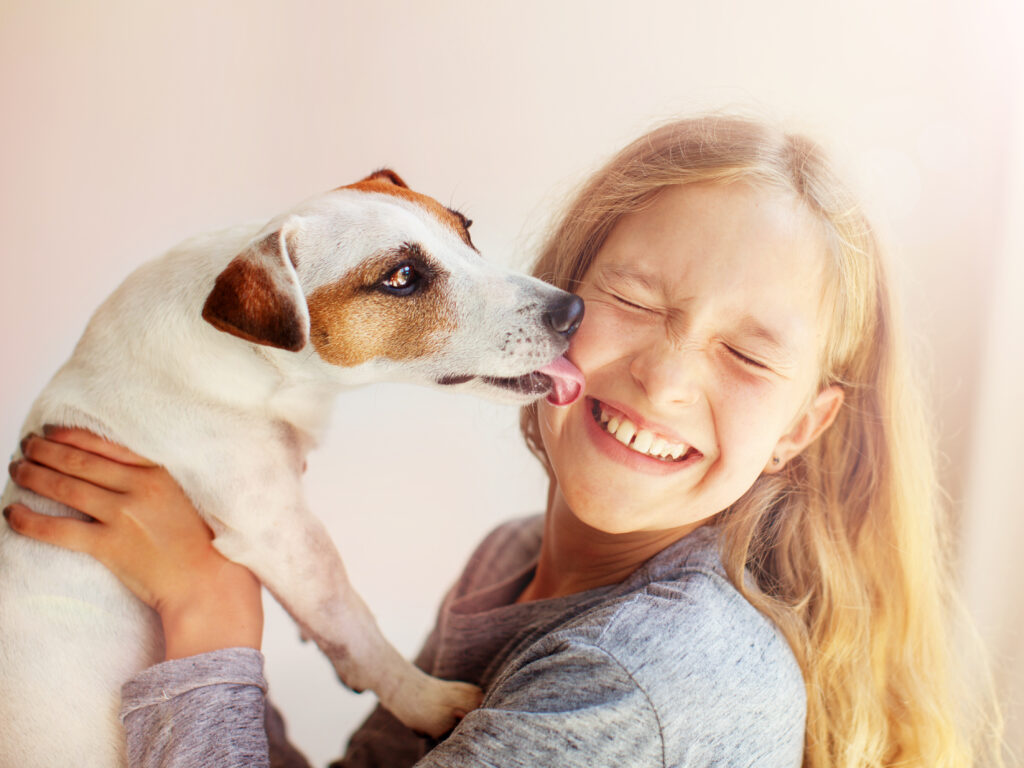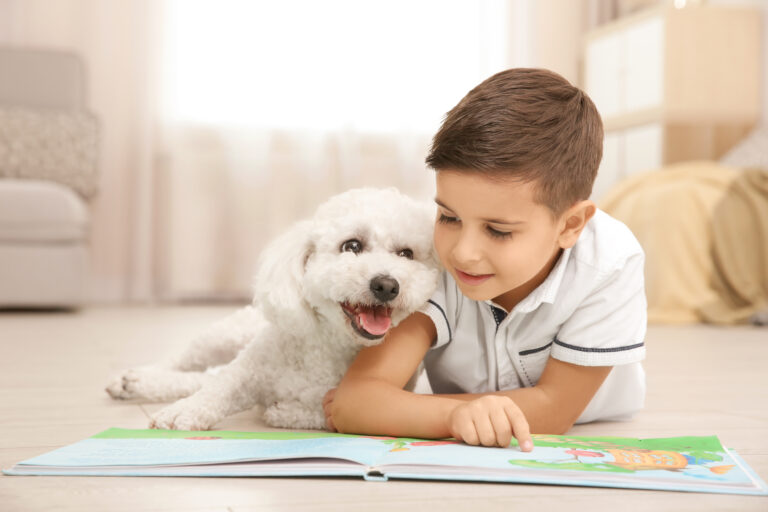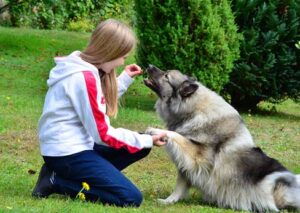A child’s best friend
For a while there it was a common belief that every child needed a good dog. While we don’t want to overgeneralize (there are some kiddos who don’t want a dog and there are some dogs who can’t handle children), there are some great benefits that can come from your child having a dog to help care for. Those benefits range from health benefits to learning opportunities, and even emotional growth opportunities.
Let’s take a look at some of the benefits that raising dogs and children together can bring.
How to pick a dog when you have children at home?
Shelters typically have an idea of which dogs are good with kids and who should go to homes without kiddos present. It’s important to take that into consideration when you’re looking for a new dog to bring home to your children.
You should plan on visiting yourself once and selecting a few dogs that you know are safe with children or ask the shelter worker which dogs have shown positive interactions with kids. Try to pick out a dog that is going to respond positively to the energy level of your child. Then you can introduce your child to several dogs without the fear of a negative interaction.
Children and dogs can be the best of companions. A dog is always ready to play, cuddle, and be a shoulder to cry on whenever your child needs it. Dogs can be that constant friend that is difficult to find. They don’t judge and are always happy to see you.
Kids love dogs. As the adult in the situation, it is your responsibility to make sure that your child knows how to interact with the dog in a safe manner. As the dog owner, it is also your job to make sure your dog knows how to interact with the child. Include your child in training, and teach them to recognize your dog’s emotional states. Always supervise and stop any behavior that can lead to serious injury. Accidents can happen and that can be bad for every dog owner, regardless of how the accident came about.
Most shelters look at the history provided by the previous owners. If a dog comes in without any history, sometimes it is the shelter’s call based on what they see with the dog’s evaluation.
But as John said, it is hard for every single dog to meet a bunch of strange kids. They are already stressed in a shelter and a bunch of rowdy kids might not be a good idea.
Kids are so unique! All of them. Dogs are unique as well. So it is really best to just bring your child to meet the dog at the shelter. The interaction will be supervised by professionals from the shelter to ensure that everything is going to be going smoothly. Plus, no shelter would put a child with a dog if they suspect the dog would not like the child.
Child health benefits from owning a dog
Dog ownership prevents allergies in infants:
Owning pets when less than 1 year old helps prevent allergies (both pet allergies and pollen allergies) because the dander on hair acts as immunotherapy. So you should absolutely let your dog snuggle up to the children! There are even some benefits to letting them share a bed with your child.
Dog ownership can prevent asthma:
In this study, the data support the hypothesis that exposure to dogs and farm animals during the first year of life reduces the risk of asthma in children.
Dog ownership can reduce childhood anxiety:
Having a pet dog in the home was associated with a decreased probability of childhood anxiety. Another study confirmed that when students were around pets for 20 minutes, their anxiety decreased.
Dog ownership eczema:
Dr. Tolly Epstein and colleagues from the University of Cincinnati and Cincinnati Children’s Hospital Medical center found that children who ARE allergic to dogs were a lot less likely to develop eczema if they owned a dog. Seems counterintuitive, but that is what they found.
Dogs improve the child’s overall health:
Dr. Kallahalli Umesh, Waltham Scientific Communication Manager, found that absenteeism because of illness was significantly less in dog owners. Dog-owning children attended school for an additional three weeks of school compared to non-dog-owning children. (This might not be a benefit to the kids, so don’t tell them this one).
This is just a short list of benefits of owning a dog. They can also reduce stress, make you happier, get kids moving, and help children form relationships with other children.
What if your child is allergic?

Between 15% and 30% of people with allergies react specifically to pets, according to the Asthma and Allergy Foundation, yet many homes find a way for humans and pets to coexist.
While it is true that some allergies are so severe that it is impossible for both to live in the same home, most of the time, a thorough strategy can nip the problem in the bud.
Your child may be allergic to pet dander, urine, or saliva. If he or she is displaying symptoms like sneezing, coughing, itchy eyes, or even skin rashes, seeing an allergologist is key. This specialist will give you vital information regarding what exactly is causing the problem, enabling you to set your strategy in motion.
When a child is tested for allergies, the allergologist will apply extracts of various potential allergens to the skin. These can include mites, dander, and other extracts. If your child is allergic to any of these, tiny bumps will show up at the site. If the family pet is the cause, you will need to take immediate measures to reduce the severity of symptoms.
Your specialist may recommend the temporary removal of the dog from the home so you can conduct a deep (think professional level) cleaning of the home. Carpets should be deep cleaned, surfaces will need to be steam vacuumed, and all bedding and soft fabrics can benefit from a hot/professional wash.
Ideally, the home should be steam vacuumed regularly. You should also invest in a top-quality HEPA filter, which will filter out particles as tiny as 0.3 microns. You should also consider replacing carpets with wood or laminate flooring since these surfaces are far easier to keep fur- and dander-free.
Ensure your pet is clean, groomed frequently (to reduce the amount of dander and fur that falls around the home), and is protected against ticks and fleas. Sometimes, a child may develop symptoms because of exposure to pests like fleas. In this case, the problem can easily be cleared up through responsible grooming.
Finally, try to ensure a nice balance between your pet’s and your child’s needs. If you have a porch or small yard, try to make it super comfortable for your pet so it spends lots of enjoyable time outside. Your dog should have shelter, warmth, plenty of shade, and soft bedding, so it feels as comfy when it is outside as when it is in. Of course, the dog should not be kept outside when the weather is too cold or hot.
What about Medication?
Specialists sometimes recommend prescription medication to counter eye/nose symptoms. Some also use immunotherapy, which is a long-term treatment that produces results over time. Sometimes, by making the changes mentioned above, you will already notice a big improvement. It is important to realize that some medication has side effects, so these should be discussed with your doctor prior to the commencement of the treatment.
Fortunately for pet-loving families, most people can live with a pet even if they are allergic to it. Through frequent washing of children’s clothing, thorough cleaning of the home, and the establishment of pet-free areas (such as the child’s bedroom), the effects of allergies can be greatly minimized. Always see an allergologist if you suspect allergies, so as to discover whether their symptoms are, in fact, related to your dog.

Consider a hypoallergenic dog
While there are no 100% hypoallergenic dogs, there are many breeds that do well with allergy sufferers. There are many shelters and rescue groups that have purebred dogs that are hypoallergenic. If you decide to get one from a breeder, check out this article “How to Choose a Good Dog Breeder” on choosing a good breeder.

Final thoughts:
Generally speaking, dogs and kids go well together. But as the parent and the person signing the adoption paperwork on your dog, it’s YOUR responsibility to ensure that no accidents happen. Teach your child to treat your dog well and to understand canine body language. Train your dog to be respectful and well behaved around children. And supervise their contact 100% of the time. By being over vigilant, you can head off any potential problem before someone gets scared or hurt.
Special thanks to:

Women’s Animal Center: America’s First Animal Shelter
Founded in 1869 Women’s Animal Center is an open-admission shelter helping pets and their owners in Lower Bucks County and far Northeast Philadelphia. WAC takes in approximately 3,000 animals a year through the animal shelter with a live release rate of over 90%. WAC operates a full-service veterinary hospital whose services include; surgery, routine vaccines, x-rays, ultrasounds, and dental care.





